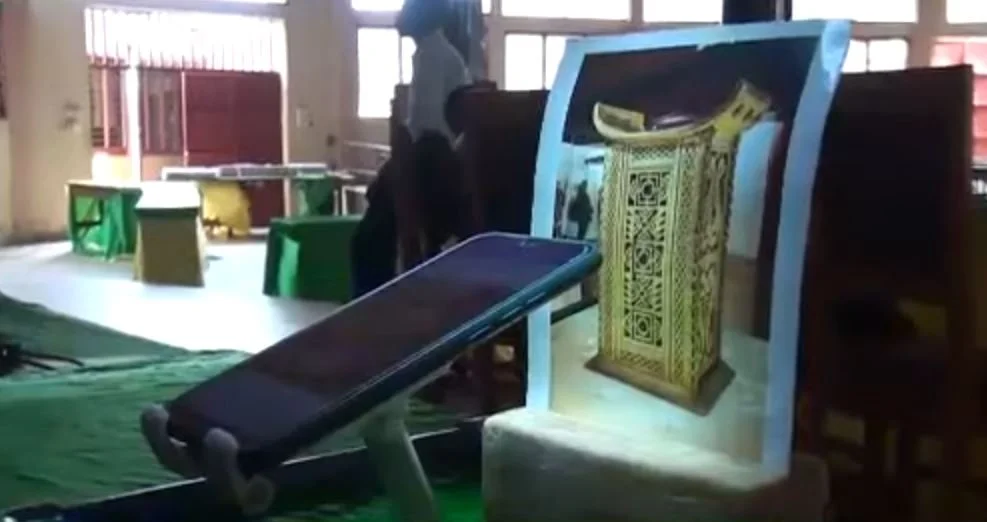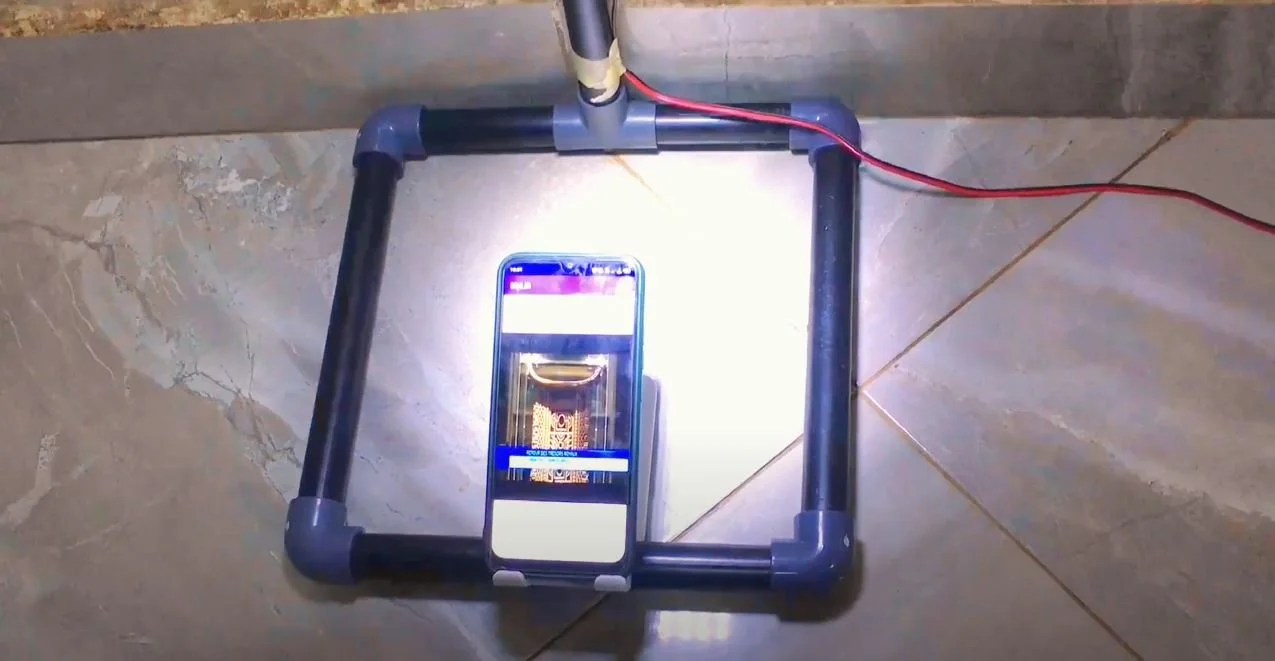Table of Contents
Experimentation of a LiFi Prototype System For Data Transmission in Museums in Benin, West Africa
LiFi Prototype System in Museums, Benin
Last week, we wrote an article about a LiFi prototype system developed at the École Polytechnique, D'Abomey-Calavi (EPAC). Anaïs Nassara carried out a research study on LiFi technology under the supervision of Dr SANYA Max Fréjus Owolabi. He is an Assistant Professor and a Senior Researcher at EPAC. Since then, a few other projects have been carried out. One of them has been a LiFi experimentation of a LiFi prototype system with smartphones in museums.
Credit to Dr SANYA Max Fréjus Owolabi, Jekhiel CHABI SARE and Biaou David Bathélémy KOCHONI
In order to offer a unique visitor experience in sites and museums, the genius creativity of two students of the National Higher Institute of Industrial Technology INSTI ex-IUT of Lokossa demonstrated LiFi as an innovative solution. Jekhiel CHABI SARE and Biaou David Bathélémy KOCHONI made available to the public a LiFi prototype system for the transmission of data in museums. They worked under the supervision of Dr Max Fréjus Owolabi SANYA.
The LiFi prototype designed has just won the 1st Innovation Prize (Category: Digital Solution) in the innovation competition organised by the Géneb at the IUT-LOKOSSA.
Credit to Dr SANYA Max Fréjus Owolabi, Jekhiel CHABI SARE and Biaou David Bathélémy KOCHONI
Credit to Dr SANYA Max Fréjus Owolabi, Jekhiel CHABI SARE and Biaou David Bathélémy KOCHONI
It can be used everywhere and in all areas where you want to use existing visible light to transmit useful information to the public (example: hospitals, places open to the public such as town halls, ministries, embassies, airports, shopping centres, shops, hotels, bars and restaurants, nightclubs, etc.). According to Dr SANYA Max Fréjus, the LiFi prototype will soon be improved and coupled with other options for more freedom and innovative experiences as per the needs of Beninese communities.
You can also watch the video below:
Below are some of the statements from the video. These statements have been translated from French to English:
Biaou David: “Hello everyone. I am Biaou David and this is Jekhiel Chabi. We are in front of a LiFi prototype for the transmission of information in a museum. And this system allows us to send information through the light stand to our smartphone. Thus, we can take the history of the art that we have in the museum with our smartphone equipped with the application and an ambient light sensor that we have with us. Here, we have a smartphone equipped with a light sensor which will allow us to receive the information given by the light. See when the smartphone is dropped on the light spectrum, automatically, a video is triggered to give us the history of where we have in front of us. And when you come to a museum at the entrance, you can have a poster that will allow you to download an application. This poster will direct you to the application you have installed on your smartphone.”
Biaou David: “If you don't have a smartphone, you can enter the museum and the museum will give you a tablet. With this tablet, you will be able to take the information of all the tunes that we have. In Benin, as in most other African countries, the visit to a museum is always guided by a well-trained guide on the history of art. But it is found that very often these guides lack the words to explain the object in front of them and this can distort the tourist experience. In the case of museums, we have created this device which will allow us or any visitor equipped with a personal smartphone or a museum tablet to be able to point towards a light source in order to take information relating to a work of art.”
“The designed system sends information to the smartphone through light. When we find ourselves under the spectrum of light in front of a tree, a video is automatically triggered to explain the history of the art. Here we have the throne of Guézo and when the smartphone is removed from the spectrum of light, automatically the video stops. And we are now going under the high sphere of light to see the history of Béhanzin. The video starts and here we have the statue of Béhanzin.”
Li-Fi Conference 2022
The Li-Fi Conference 2022 Edition was a great success. Li Fi Tech News will very soon write articles on the topics treated at the Conference.
What is LiFi?
LiFi, also known as "Light Fidelity" is a wireless optical networking technology, which uses light-emitting diodes (LEDs) to transmit data. In 2011, professor Harald Haas made a LiFi demonstration at the TED (Technology, Entertainment, Design) Global Talk on Visible Light Communication (VLC).
VLC uses light as a medium to deliver high-speed communication like Wi-Fi and complies with the IEEE standard IEEE 802.15.7. The IEEE 802.15.7 is a high-speed, bidirectional, and fully networked wireless communication technology-based standard similar to Wi-Fi's IEEE 802.11.
How does LiFi work?
LiFi is a high speed, bidirectional, and fully networked wireless communication of data using light. LiFi constitutes of several light bulbs that form a wireless network.
When an electrical current goes through to a LED light bulb, a stream of light (photons) emits from the lamp. LED bulbs are semiconductor devices, which means that the brightness of the light flowing through them can change at extremely high speeds. The signal is sent by modulating the light at different rates. The signal can then be received by a detector that interprets the changes in light intensity (the signal) as data. Also when the LED is ON, you transmit a digital 1, and when it is OFF, you transmit a 0.
LiFi Benefits
The primary benefits of LiFi are as follows:
• Security: Provides entirely secure access. Where there is no light there is no data.
• Safety: Does not produce electromagnetic radiation and does not interfere with existing electronic systems.
• Localisation: Allows localisation due to the small coverage area of LiFi access point - localisation can be used for very precise asset tracking.
• Data density: Provides ubiquitous high-speed wireless access that offers substantially greater data density (data rate per unit area) than RF through high bandwidth reuse.
Credit to Oledcomm
LiFi Applications
LiFi can be used for so many applications and the list is increasing every year. You can read our updated list of Li-Fi applications at the following link:
Credit to pureLiFi
LiFi Systems Reviews by LiFi Tech News
OLEDCOMM LIFIMAX KIT REVIEW - ONE YEAR IN
We reviewed the LiFiMax kit produced by the leading French LiFi company Oledcomm. We bought this LiFi kit system at the end of 2020. After over a year of use, we decided to write a review of this LiFi system. We looked briefly at the profile of Oledcomm, a brief history of the LiFiMax system, the Kit box contents, some testing and performance results of this LiFi system, the customer experience and our own verdict (the good and the bad points) of the LiFiMax kit.
You can read the review on this link:
https://www.lifitn.com/blog/lifimaxreview
SIGNIFY TRULIFI 6002.1 STARTER KIT SYSTEM REVIEW
We also reviewed the Trulifi 6002.1 starter kit produced by Signify, the world leader in lighting for professionals, consumers and lighting for the Internet of Things. We got this LiFi kit system with the help of PCDSI and Signify around August 2021. In a similar fashion done with our previous review of the LiFiMax kit a few months ago, we will look briefly at the profile of Signify, a brief history of the Trulifi 6002.1 kit, the Kit box contents, some testing and performance results of this LiFi system, the customer experience and our own verdict (the good points and the bad points) of the Trulifi 6002.1 kit.
You can read the review on this link:
https://www.lifitn.com/blog/trulifi6002review
In conclusion, if you are also interested to hear more information about the OWNII Coin or enquire about LiFi devices such as the LiFiMax and Trulifi, you can contact us through our chatbot or by sending an email through our contact us form. If you enjoyed this post and would like to hear more updates about LiFi technology, subscribe to our newsletter. Don’t forget to subscribe to our social media accounts. You can also join our Telegram group about LiFi technology on this link:
https://t.me/joinchat/FMzOmsEKyJFrU6Af









